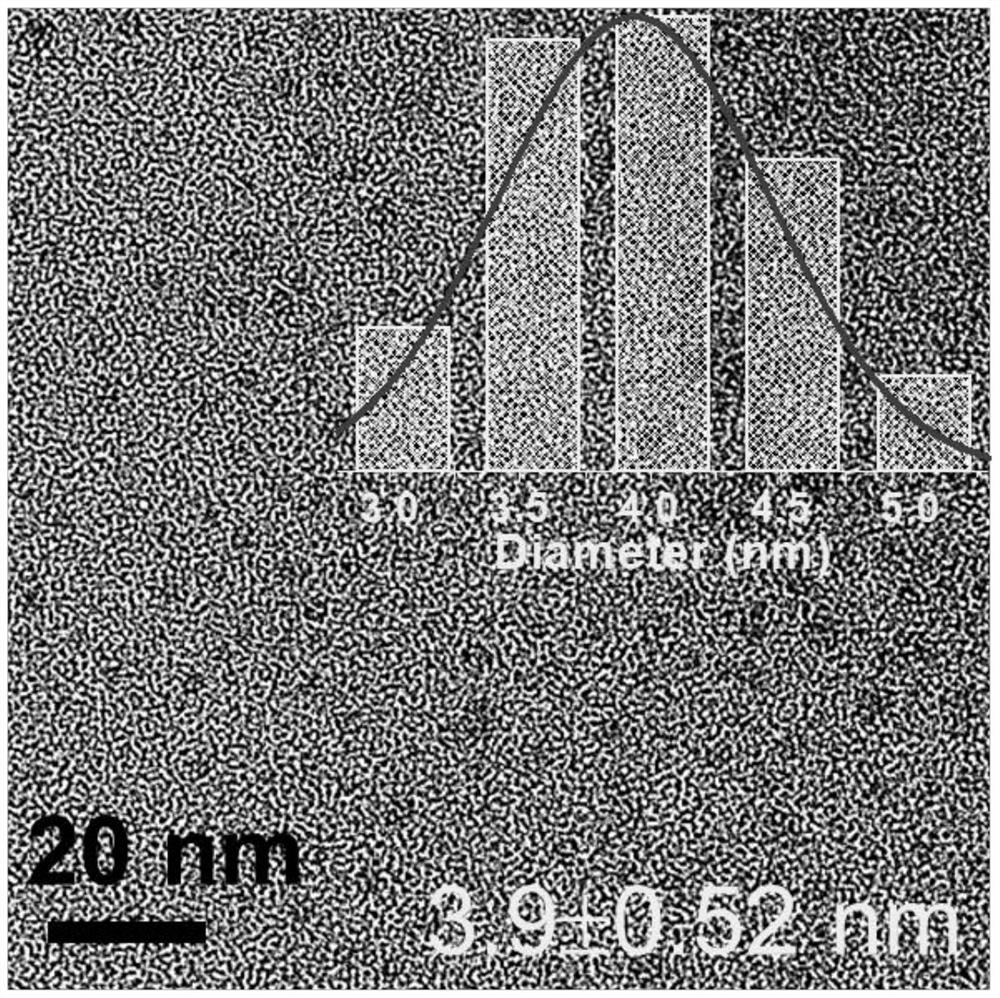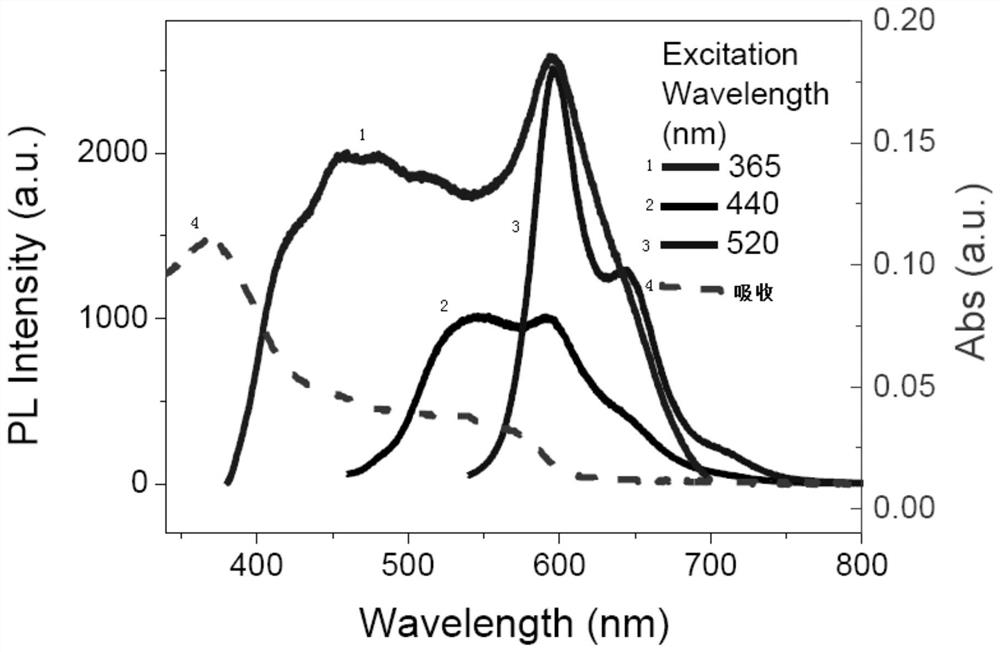Preparation and regulation method of a high-color fluorescent carbon nanodot
A technology of carbon nano-dots and fluorescence, which is applied in nanotechnology, nano-optics, nanotechnology, etc., can solve rare problems and achieve the effects of simple process, beneficial protection, simple and efficient purification method
- Summary
- Abstract
- Description
- Claims
- Application Information
AI Technical Summary
Problems solved by technology
Method used
Image
Examples
Embodiment 1
[0028] 1. Weigh 0.25g of o-phenylenediamine and 0.5g of phenol, put them in a 20mL reaction kettle, add 15mL of ethanol to it, put it in an oven, heat up to 200°C, keep it warm for 8 hours, and cool naturally to obtain fluorescent carbon nanodots The solution.
[0029] 2. The solution obtained in step 1 was taken out and placed in acetone 100 times the volume of the solution after the reaction. After ultrasonication for 1 hour, it was placed in a high-speed centrifuge at a speed of 5000 rpm for 20 minutes.
[0030] 3. Take the precipitate from the lower layer and redisperse it in ethanol with 3 times the volume of the solution after the reaction, sonicate for 60 minutes, remove the solid from the lower layer, and dry it.
[0031] 4. Dissolve the solid obtained in step 3 in ethanol to obtain fluorescent carbon nanodots with high color quality. The CIE chromaticity coordinates are (0.33,0.33), the CRI value is as high as 93, the CCT is 5453K, and the standard white light Emissi...
Embodiment 2
[0033] 1. Weigh 0.1g of p-phenylenediamine and 0.25g of catechol, put them in a 20mL reaction kettle, add 10mL of N,N-dimethylformamide into it, put them in an oven, raise the temperature to 180°C, and keep warm After 12 hours, cool naturally to obtain a solution of fluorescent carbon nano-dots.
[0034] 2. The solution obtained in step 1 was taken out and placed in petroleum ether 1000 times the volume of the solution after the reaction. After ultrasonication for 0.5 hours, it was placed in a high-speed centrifuge at a speed of 1000 rpm for 30 minutes.
[0035] 3. Take the lower layer of precipitate and redisperse it in ethanol with 5 times the volume of the solution after the reaction, sonicate for 60 minutes, remove the lower layer of solid, and dry.
[0036] 4. Dissolve the solid obtained in step 3 in ethanol to obtain fluorescent carbon nanodots with high color quality. The CIE chromaticity coordinates are (0.33,0.33), the CRI value is as high as 93, the CCT is 5453K, and t...
Embodiment 3
[0039] 1. Weigh 0.6g of naphthalene diamine and 0.8g of phloroglucinol, put them in a 20mL reaction kettle, add 15mL of n-amyl alcohol into it, put them in an oven, heat up to 160°C, keep it warm for 6 hours, and cool naturally to get A solution of fluorescent carbon nanodots.
[0040] 2. The solution obtained in step 1 was taken out and placed in ethyl acetate whose volume was 500 times that of the solution after the reaction. After ultrasonication for 1 hour, it was placed in a high-speed centrifuge at a speed of 5000 rpm for 20 minutes.
[0041] 3. Take the lower layer of precipitate and redisperse it in ethanol with 8 times the volume of the solution after the reaction, sonicate for 60 minutes, remove the lower layer of solid, and dry.
[0042] 4. Dissolve the solid obtained in step 3 in ethanol to obtain fluorescent carbon nanodots with high color quality. The CIE chromaticity coordinates are (0.33,0.33), the CRI value is as high as 93, the CCT is 5453K, and the standard ...
PUM
| Property | Measurement | Unit |
|---|---|---|
| particle diameter | aaaaa | aaaaa |
Abstract
Description
Claims
Application Information
 Login to View More
Login to View More - R&D
- Intellectual Property
- Life Sciences
- Materials
- Tech Scout
- Unparalleled Data Quality
- Higher Quality Content
- 60% Fewer Hallucinations
Browse by: Latest US Patents, China's latest patents, Technical Efficacy Thesaurus, Application Domain, Technology Topic, Popular Technical Reports.
© 2025 PatSnap. All rights reserved.Legal|Privacy policy|Modern Slavery Act Transparency Statement|Sitemap|About US| Contact US: help@patsnap.com



